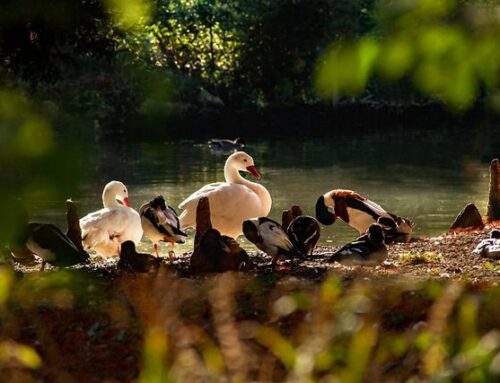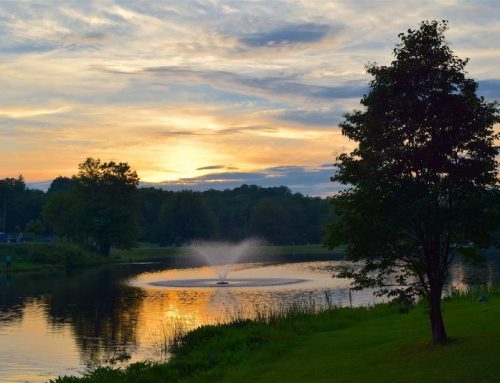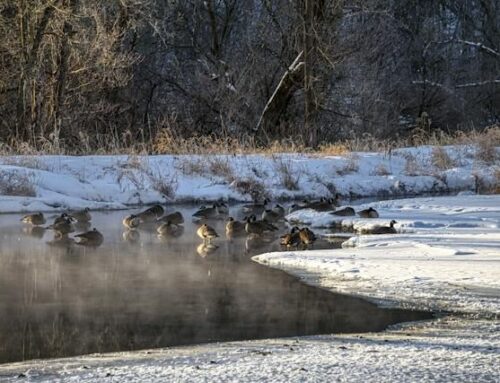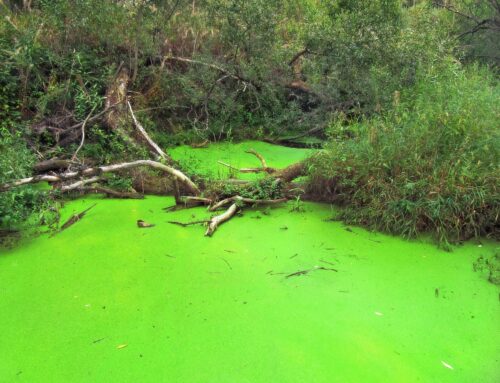How to Easily Enhance the Beauty of Your Pond
 Ponds are a beautiful addition to any property. They bring a sense of tranquility and peacefulness to any outdoor space, but they can also be a source of frustration if not maintained properly. One of the best ways to enhance your pond’s beauty is by adding plants around its edge. Not only do plants add an aesthetic appeal, but they also provide a natural filter system and help to maintain the ecological balance of your pond. In this article, we will discuss the top five plants to put around pond edges and how to care for them.
Ponds are a beautiful addition to any property. They bring a sense of tranquility and peacefulness to any outdoor space, but they can also be a source of frustration if not maintained properly. One of the best ways to enhance your pond’s beauty is by adding plants around its edge. Not only do plants add an aesthetic appeal, but they also provide a natural filter system and help to maintain the ecological balance of your pond. In this article, we will discuss the top five plants to put around pond edges and how to care for them.
Benefits of Having Plants Around Your Pond
Plants are essential for maintaining a healthy, clean, and balanced pond ecosystem both in and around your pond. They provide oxygen, absorb excess nutrients, and filter out impurities from the water. This natural filtration system helps to reduce algae growth and maintain the clarity of the water. Plants also provide a natural habitat for wildlife, such as fish, frogs, and birds, which adds to the overall beauty of your pond.
In addition to their ecological benefits, plants around your pond also add aesthetic value to your outdoor space. They come in a variety of colors, shapes, and sizes, and can be used to create a natural-looking environment. Plants also soften the hard edges of your pond and blend it into the surrounding landscape.
Factors to Consider When Choosing Plants for Your Pond
When choosing plants for your pond, there are several factors to consider. First, consider the climate in your area and the hardiness of the plants you choose. Second, consider the size of your pond and the space available for planting. Third, consider the amount of sunlight and water your plants will receive. Finally, consider the purpose of the plants, whether they will be used for aesthetic purposes, as a natural filter system, or for wildlife habitat.
Top Five Plants to Put Around Pond Edge
1. Water Lilies
Water lilies are a popular choice for pond owners. They come in a variety of colors, including white, pink, yellow, and red, and can be used to create a natural-looking environment. Water lilies prefer full sun and are excellent natural filters, absorbing excess nutrients from the water. They also provide a natural habitat for fish and other wildlife.
When planting water lilies, it is important to use a heavy clay soil and to plant them in a container to prevent them from spreading too much. Water lilies should be fertilized monthly during the growing season and deadheaded regularly to promote new growth.
2. Pickerelweed
Pickerelweed is a hardy plant that is native to North America. It has long, spear-like leaves and produces spikes of blue-purple flowers. Pickerelweed prefers full sun to partial shade and is an excellent natural filter, absorbing excess nutrients from the water. It also provides a natural habitat for wildlife, such as dragonflies and butterflies.
When planting pickerelweed, it is important to use a heavy clay soil and to plant it in a container to prevent it from spreading too much. Pickerelweed should be fertilized monthly during the growing season and deadheaded regularly to promote new growth.
3. Cattails
Cattails are a classic choice for pond owners. They have long, narrow leaves and produce brown, cigar-shaped flowers. Cattails prefer full sun and are excellent natural filters, absorbing excess nutrients from the water. They also provide a natural habitat for wildlife, such as birds and insects.
When planting cattails, it is important to use a heavy clay soil and to plant them in a container to prevent them from spreading too much. Cattails should be fertilized monthly during the growing season and deadheaded regularly to promote new growth.
4. Japanese Iris
Japanese iris is a beautiful and unique plant that is native to Japan. It has long, sword-like leaves and produces large, showy flowers in shades of blue, purple, and white. Japanese iris prefers full sun to partial shade and is an excellent natural filter, absorbing excess nutrients from the water. It also provides a natural habitat for wildlife, such as dragonflies and butterflies.
When planting Japanese iris, it is important to use a heavy clay soil and to plant them in a container to prevent them from spreading too much. Japanese iris should be fertilized monthly during the growing season and deadheaded regularly to promote new growth.
5. Sweet Flag
Sweet flag is a versatile plant that is native to North America. It has long, narrow leaves and produces small, inconspicuous flowers. Sweet flag prefers full sun to partial shade and is an excellent natural filter, absorbing excess nutrients from the water. It also provides a natural habitat for wildlife, such as fish and frogs.
When planting sweet flag, it is important to use a heavy clay soil and to plant it in a container to prevent it from spreading too much. Sweet flag should be fertilized monthly during the growing season and deadheaded regularly to promote new growth.
Planting & Caring For Aquatic Plants
When planting these plants, it is important to use a heavy clay soil and to plant them in a container to prevent them from spreading too much. The container should be placed on the bottom of the pond or on a shelf in the water. The plants should be fertilized monthly during the growing season and deadheaded regularly to promote new growth.
In addition to these top 5 plants, there are many other plants to consider for your pond’s edge, such as rushes, sedges, and ferns. When choosing plants for your pond, it is important to consider their hardiness, space requirements, and purpose.
Rochester NY Pond Design & Maintenance
Adding plants around your pond can enhance its beauty and provide a natural filter system to maintain its ecological balance. Water lilies, pickerelweed, cattails, Japanese iris, and sweet flag are all excellent choices for pond owners. When planting and caring for these plants, it is important to use a heavy clay soil, plant them in a container, fertilize them monthly, and deadhead them regularly. Consider these factors when choosing plants for your pond and enjoy the natural beauty they bring to your outdoor space.
Enhance the beauty of your pond by adding plants around its edge. Choose from water lilies, pickerelweed, cattails, Japanese iris, sweet flag, and many others to create a natural-looking environment. Follow these planting and care tips for a healthy and balanced ecosystem in and around your pond.
Ongoing maintenance is critical to the performance of every pond. Without regular maintenance, the system will eventually fail due to excess buildup and structural issues, and routine upkeep can prevent costly rehabilitative and restorative repairs. For all your Rochester NY Pond Maintenance services call ECO Pond Solutions at (716) 410-3613 and see how we can help both you and your pond.





